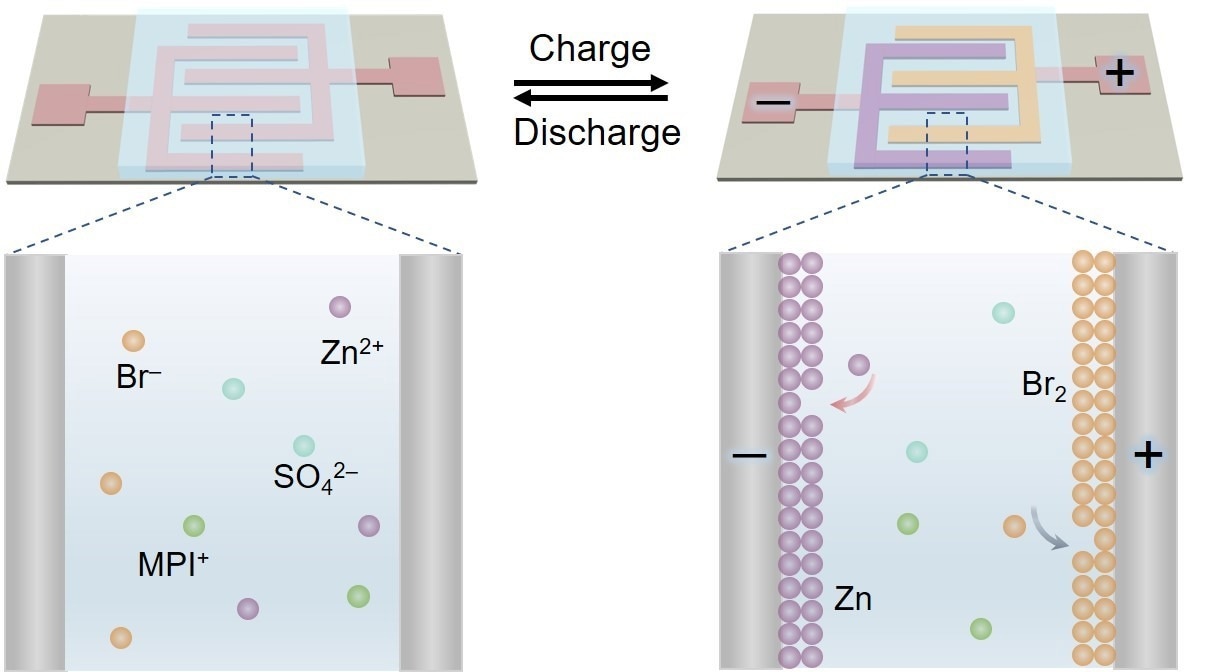Future miniaturized electronic devices, like smart medical implants, wireless sensors, and the Internet of Things will require high-performance, micro-sized electrochemical energy storage systems. Microbatteries [MBs] have a higher energy density and a more constant voltage output than microsupercapacitors.
 In-situ construction of the Br2 cathode and Zn anode during the charging process. Image Credit: Image by IMCAS
In-situ construction of the Br2 cathode and Zn anode during the charging process. Image Credit: Image by IMCAS
Existing MBs, on the other hand, involve time-consuming construction procedures and poor electrochemical performance. Furthermore, no techniques exist for creating or manipulating a liquid microelectrode.
Professor Liangti Qu of Tsinghua University, Professor Zhipan Zhang of the Beijing Institute of Technology, and Professor Feng Liu of the Chinese Academy of Sciences’ Institute of Mechanics (IMCAS) recently suggested a dual-plating approach for rapidly fabricating new zinc-bromine microbatteries (Zn-Br2 MBs) with ultrahigh areal energy density and polarity-switchable operability.
On July 13th, 2022, the findings were published in Science Advances.
This strategy requires plating cathodes and anodes on microelectrodes in-situ during the charging period, which eliminates the need for active material synthesis. Moreover, since the new technique implies plating in cathode-anode pairs, the difficult and time-consuming mass matching of cathodes and anodes in conventional techniques can be prevented.
The scientists using redox-active 1-methyl-3-propylimidazolium bromide, which not only prevents Br3- diffusion but also has rapid kinetics during charging and discharging, built the first aqueous Zn–Br2 MBs with liquid cathodes.
There were an equal amount of cathodes and anodes in the Zn-Br2 MBs. They also had a record-breaking areal capacity and energy density, which was more than ten times that of most planar microbatteries.
Since Zn-Br2 MBs are polarity switchable, they can self-correct during potentially faulty operations like incorrectly linking cathodes and anodes during charging.
The combination between the suitable binding strength and loose network microstructures in electrodes endows Zn–Br2 MBs with outstanding performance.
Feng Liu, Professor, Institute of Mechanics, Chinese Academy of Sciences
This research offers useful insights into how to promote the advancement of miniaturized electronics by fine-tuning their states, mechanical characteristics, and microstructures.
Journal Reference:
Dai, C., et al. (2022) Fast constructing polarity-switchable zinc-bromine microbatteries with high areal energy density. Science Advances. https://doi.org/10.1126/sciadv.abo6688.